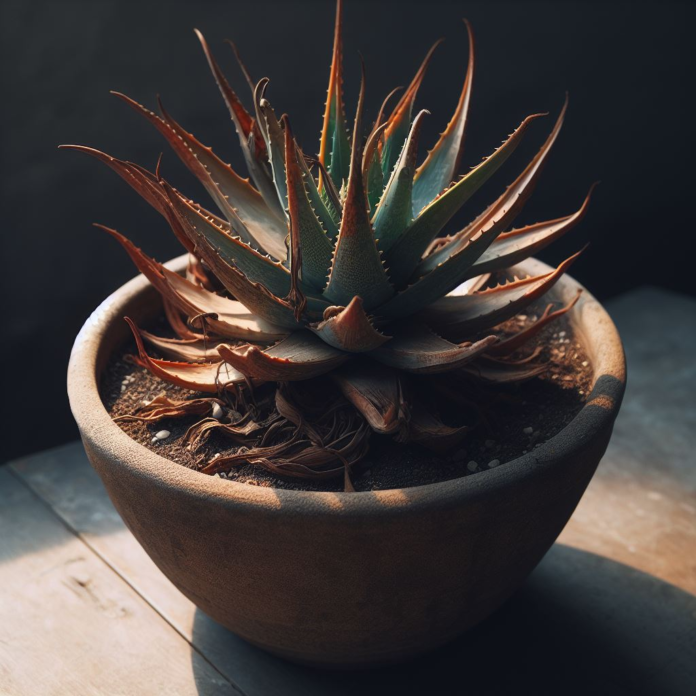Aloe vera, with its succulent leaves and myriad health benefits, is a popular and resilient houseplant. However, if you’ve noticed your once vibrant green aloe plant turning brown, it can be a cause for concern. Fear not, as we delve into the potential reasons behind this color transformation and offer insights into how to revive your aloe and restore it to its green glory.

Why is Your Aloe Plant Turning Brown
1. Overwatering Woes:
One of the most common reasons for aloe plants turning brown is overwatering. Aloe vera, being a succulent, thrives in well-draining soil and prefers to dry out between waterings. Excessive moisture can lead to root rot, causing the leaves to turn brown and mushy.
Solution: Allow the soil to dry out completely before watering again. Ensure your aloe is planted in a pot with drainage holes and consider repotting if the soil remains consistently soggy.
2. Sunburn Sensation:
While aloe vera loves sunlight, it can suffer from sunburn if exposed to intense, direct sunlight for prolonged periods. Sunburn manifests as brown or reddish discoloration on the leaves.
Solution: Gradually acclimate your aloe plant to sunlight by placing it in a location with filtered or indirect sunlight. Shield it from scorching afternoon sun, especially during the peak of summer.
3. Inadequate Light Conditions:
On the flip side, insufficient sunlight can also lead to browning in aloe plants. If your aloe isn’t receiving enough light, it may become weak and discolored.
Solution: Move your aloe to a brighter location, preferably one with indirect sunlight. A south or west-facing window is often ideal for providing the necessary light.
4. Poor Soil Drainage:
Aloe vera plants detest sitting in waterlogged soil. If the soil lacks proper drainage, it can trap excess moisture, leading to root issues and browning leaves.
Solution: Repot your aloe using a well-draining succulent or cactus mix. Add perlite or sand to enhance drainage and ensure water can escape freely from the pot.
5. Temperature Extremes:
Aloe plants prefer temperatures between 59°F to 77°F (15°C to 25°C). Exposure to extreme cold or heat can result in browning leaves.
Solution: Protect your aloe from temperature extremes. If you place it outdoors during warm weather, bring it inside before temperatures drop. Shield it from frost, as aloe vera is sensitive to freezing temperatures.
6. Nutrient Deficiency:
Inadequate nutrients can contribute to aloe vera discoloration. If your plant lacks essential nutrients, the leaves may turn brown or yellow.
Solution: Feed your aloe vera with a balanced, water-soluble fertilizer designed for succulents. Follow the recommended dosage on the fertilizer packaging, and avoid over-fertilizing, as this can also harm the plant.
7. Natural Aging Process:
It’s essential to recognize that, like all living organisms, aloe plants undergo a natural aging process. Older leaves at the base of the plant may turn brown and wither as new growth emerges.
Solution: Trim away brown, withered leaves to encourage new, healthy growth. Focus on maintaining optimal care conditions to support the vitality of your aloe.
Conclusion
Your aloe plant’s change in color might be alarming, but with careful observation and targeted care adjustments, you can often revive a struggling plant. By addressing potential issues like overwatering, sunlight exposure, soil quality, temperature, and nutrient levels, you give your aloe the best chance to recover and thrive once again. Remember, aloe vera is a resilient plant, and with a little TLC, you can enjoy its soothing, green presence for years to come.



